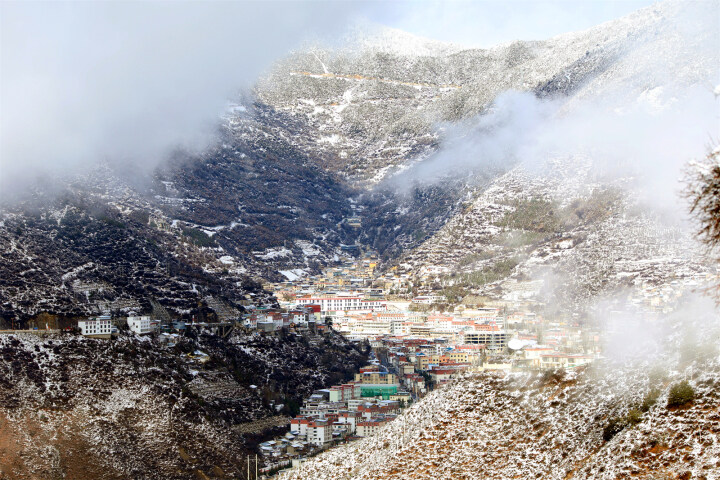Diqing Tibetan Autonomous Prefecture, where Shangri-La lies, will mark its 60th founding anniversary in September. On the occasion, Yunnan Daily reporters visited major temples and church where people live in harmony to pursue goodness, truth and beauty. 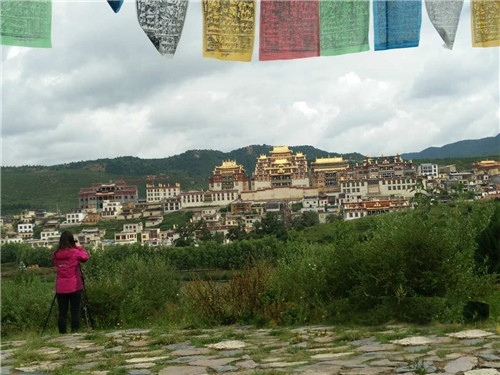
At the Ganden Sumtseling Monastery 5 km off Shangri-La City, monks, local Tibetan Buddhists and tourists were stepping leisurely to and fro in the temple courts. Built in 1679, the temple is the largest Tibetan Buddhist monastery in Yunnan Province.
Thanks to its long history and harmonious air, Sumtseling has become a hot destination for tourists to experience Tibetan culture, including droves of European and American tourists.
“It’s beautiful. The temple looks like the Potala Palace,” said a mid-aged male tourist from Holland.
“Well, I have interest in Tibetan culture, so I come.” Zoe, a 19-year-old college girl from France, said she enjoys the temple’s tranquil air most, while her friend Luc was impressed by the refined Thangkas in the temple.
At a corner in the temple hall, a middle-east tourist helped care a kitty pet when its monk master was chanting the scripture. 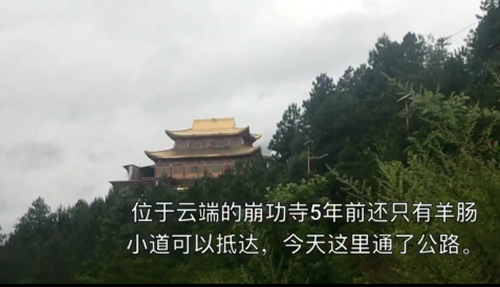
Bengong Temple lies on the top of the Bengong Mountain in Deqin County, Diqing Prefecture.
Several years ago, it was connected by a narrow winding trail, but now the access is a brand new road.
“The zigzag road is not so wide, but it is good enough to improve transport conditions of the temple and its neighboring villages,” said Paiba Duji, head of the temple.
Due to ground setting in 2012, the temple’s main hall was damaged and out of use. Under the help of Deqin’s related departments, a beautiful new hall was built up with an investment of over 10 million yuan. 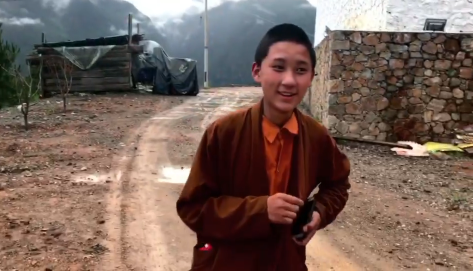
“The truth is that besides the road and hall, the monk dorms and reception room were also built up thanks to generous aid from the government after the 2013 earth quake,” Duji added.
The temple now has 37 monk dorms, and the housing and construction bureau of Deqin County contributed 370,000 yuan in building. 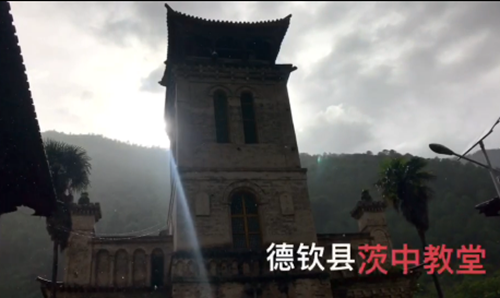
Cizhong Catholic Church is located in Cizhong Village, 80 km from the Deqin county seat in the south.
First built in 1909, the church was listed as a key cultural relic site under Yunnan Provincial protection in 1987.
The church also witnessed tremendous changes in the Cizhong village, including change in mindset.
In the village, 60% of its population are catholic believers, while the remaining 40% believe in Tibetan Buddhism. However, China’s policies in religion have made them live in harmony.
“The water tank for fire fighting, fire extinguishers, and projector in the meeting room are all donated by our prefectural and county-level government, “ said Wu Gongdi, 69, head of the church. 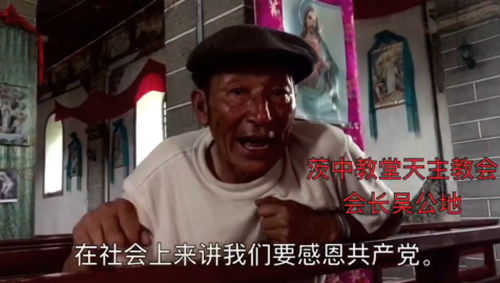
Wu added that the whole society is grateful to the government and the Party, and “there wouldn’t be the well-equipped church and the happy life now without the CPC.”
Wu also led the Cizhong villagers in grape planting, bringing an extra income of 20,000 yuan to each household annually.
In fact, Wu’s voice has long been a consensus among the people living in Diqing Tibetan Autonomous Prefecture, which makes a good, beautiful and harmonious eden.
Chinese reporting by Xiong Yan, Chu Donghua, Zhang Ruogu & You Xiangneng; Trans-editing by Wang Shixue
|










7740f3b5-9ecb-438e-9052-76cb2d4bb671.jpg)
